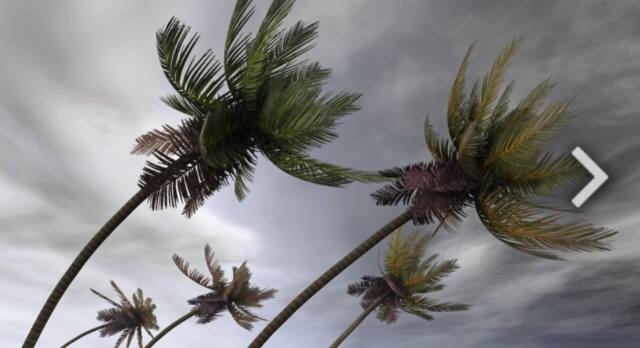Hurricane season is here and if you haven’t done so already, it’s always great practice to review your Hurricane Policy! But how do I even know what to look for? In this blog, I’m going to break down the basic coverage for you so you can decide for yourself what you do and do not need, BEFORE you talk to your agent!
Before I get to the specific coverage though, it’s first important to understand what Hurricane Coverage is. Hurricane coverage is generally a SEPARATE stand-a-lone policy. “Say what,” you may say? “Wait, isn’t it just included in my Homeowner’s or Renter’s policy?” The answer is generally, no! Now, some insurance carriers may offer a Homeowner’s or Renter’s Policy WITH a Hurricane policy, and bundle it as one, but it’s still generally a SEPARATE policy with a coverage’s that are separate from your Homeowner’s or Renter’s Policy. So what does this mean? It means NEVER assume because you have a Homeowner’s or Renter’s Policy your home or belongings if you rent is covered if your home is destroyed by a hurricane.
Having first laid that foundation, let’s discuss why it’s considered a separate policy. Hurricane insurance is a separate policy because it only comes into play if it is a “named Hurricane.” What is a named Hurricane you may ask? Hurricane Katrina, or Hurricane Iniki, both of those Hurricane’s were actually named as a Hurricane. The other important factor is when the hurricane actually made landfall. So, let’s talk about the most recent storms and hurricanes we had for Hawaii. Hurricane Iselle and Hurricane Julio were two named hurricanes from 2014. Hurricane Iselle actually hit land on the Big Island of Hawaii on July 31, 2014, Hurricane Julio, tailed Hurricane Iselle, but even though it was a named Hurricane, it never actually touched down on any of the Hawaii Islands. Despite this, if there were any damage from Hurricane Julio (strong force winds and rains affected the areas even though Julio never made landfall), generally any claims made during Julio, would not be paid by your Hurricane Policy.
This is usually the where I get the questions. So, if the Hurricane Policy doesn’t pay, which policy pays for the damage to my home? In this case, again generally, it would be your Homeowner’s policy. Wait but you said, my Homeowner’s doesn’t pay for Hurricane Damage? It doesn’t if again it’s a named Hurricane that touches down in your location. To summarize, Hurricane Insurance ONLY pays if it is a named Hurricane that makes landfall. Now, having said this, and before I get hate mail, of course there are instances when this is not the case, but I’m speaking in general terms.
So, we understand when Hurricane Insurance comes into play, let’s discuss what it covers. The first coverage I’m going to discuss is your Dwelling Coverage. Your Dwelling is the home itself. So, if worse case scenario, a hurricane hits and completely wipes out your home with all your belongings in it, the insurance company will pay damages up to the amount of your policy coverage.
Then there’s “Other Structures” coverage. Other Structures covers detached things from your home such as a shed, or a detached garage. Generally, this coverage is based on a percentage of your Dwelling. So, let’s say for example your Dwelling coverage is $200,000. Most of time it’s based off 10% of your Dwelling, so again in this case, you will have $20,000 to rebuild your garage or shed.
The next coverage is “Personal Property” coverage. (Now if you rent this is the section that is important for you. You only pay for your belongings and your Landlord should have a policy for the home itself.) This coverage is going to cover the things you have in your home. Your furniture, your dishes, your clothing. It is not, however, going to cover things such as your car, that’s covered by your auto policy, generally under “Comprehensive” coverage, but that’s a topic for a different day.
Another coverage that you may see on your policy is “Loss of Use” or “Additional Living Expenses” coverage. That is coverage that either pays if you completely lose your home due to a hurricane and have to stay at a hotel or with family, or say you don’t lose your home but just a portion, say a tree collapses on your kitchen and now you can’t cook at your home, the insurance, generally will pay the additional expense of eating out, etc.
Deductibles range typically based on a percentage. So, if the home is destroyed and you have a total of $400,000 of coverage, at a 2% deductible, you would have to pay the first $8,000 before your insurance will begin to pay.
While there are many other things that can be added on to a Hurricane policy, these are the basic coverages. There is many other coverage types that you can add on to you policy, and I’m not going to go into that, however, there is one last thing to consider when choosing your insurance policy, and it is whether your policy includes or excludes “Ordinance or Law.” What this means, is if a hurricane were to destroy your home, and you needed to rebuild, are there things in your home (plumbing, wiring, or roof perhaps) that would be upgraded due to the change in building code? If so, you may be responsible for this “upgrade.” If you want the insurance to pay for this upgrade, you’ll need to make sure that your policy INCLUDES “Ordinance or Law.”
Again, of course there are many variations and every insurance company has a claims department that determines, when and how and if they are going to pay, but generally, this is how Hurricane Insurance works. If you have any questions you’re welcome to contact Garden Island Insurance, LLC at 808-822-4000 for more information or visit our facebook page at: www.facebook.com/gardensislandins
